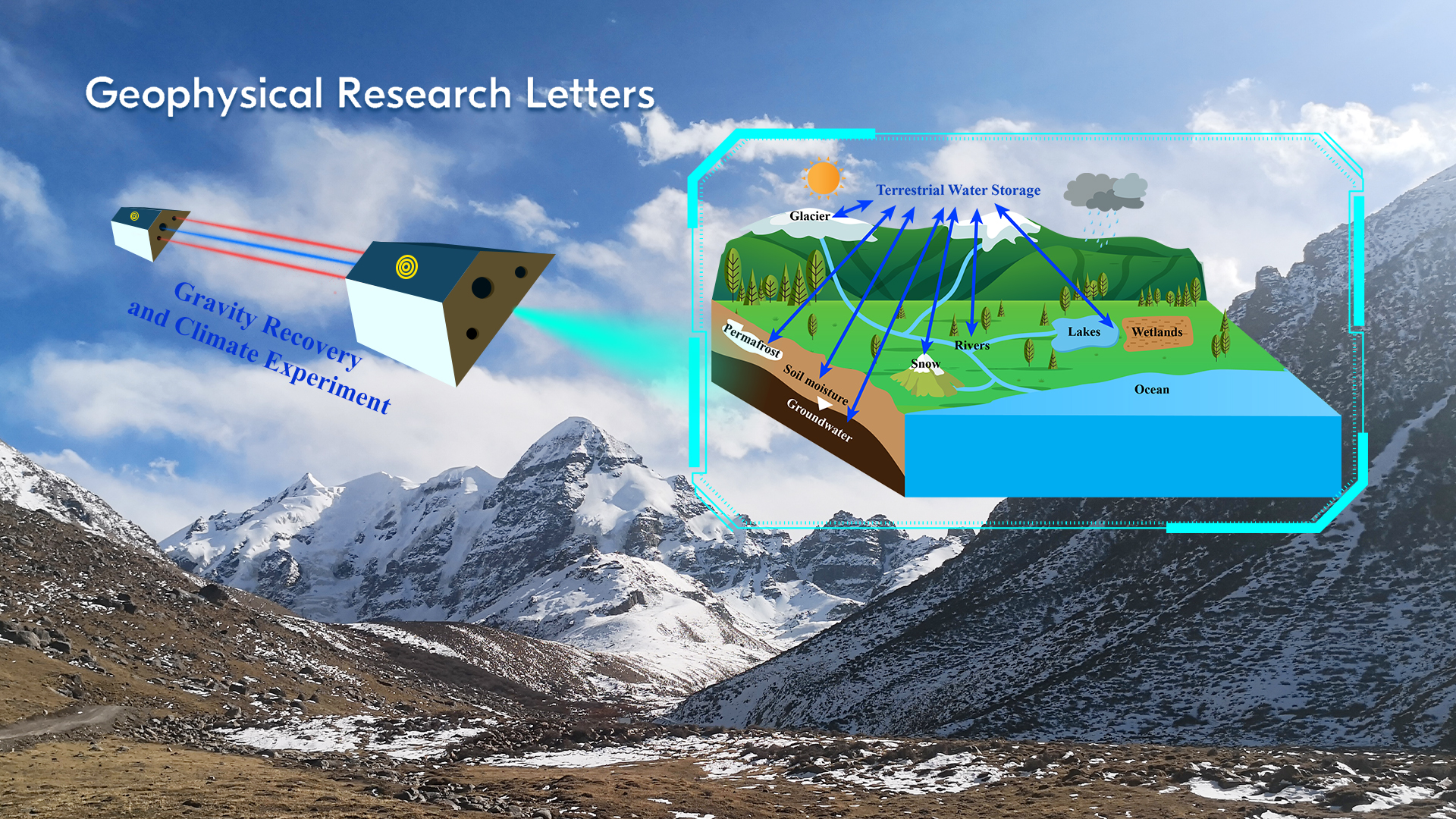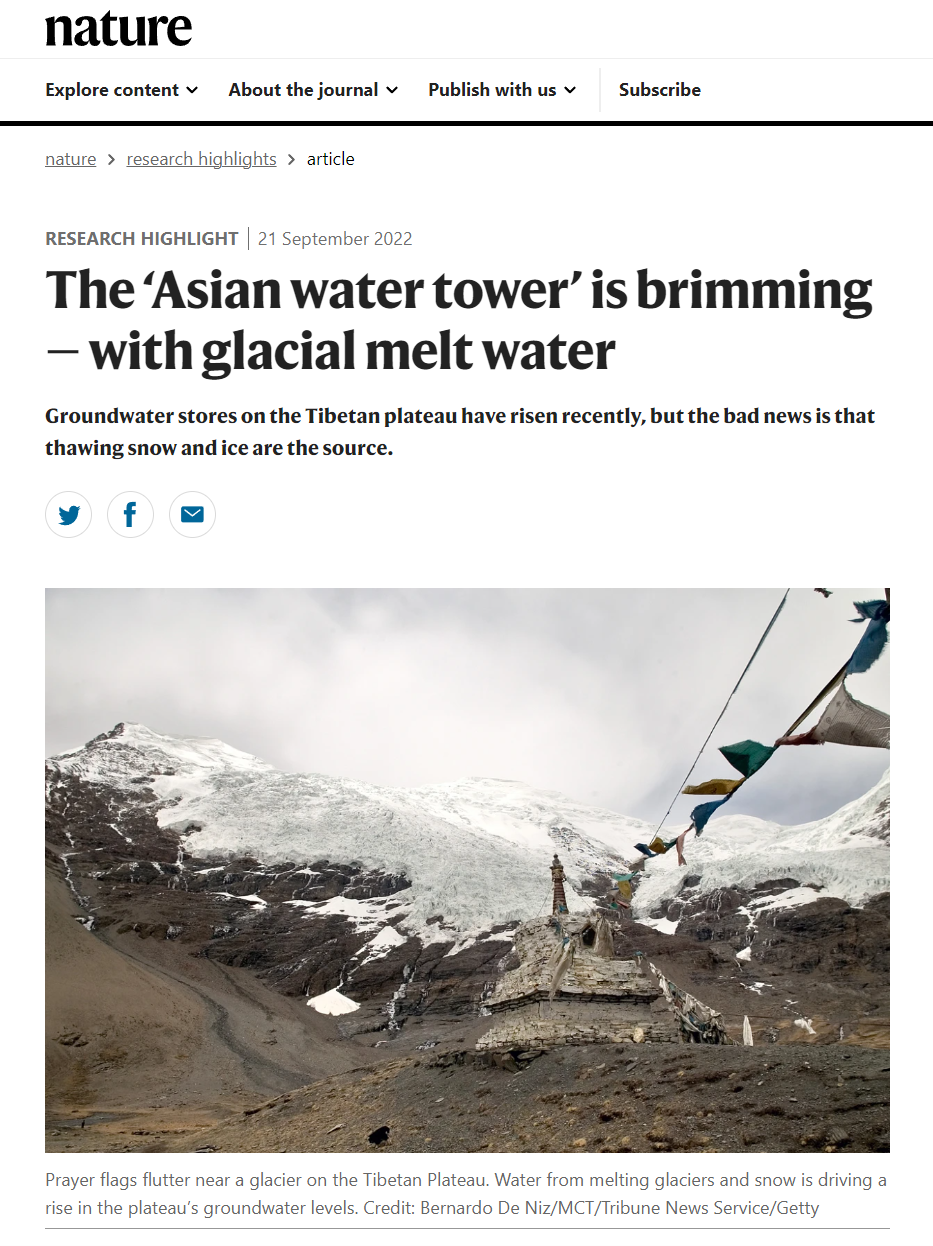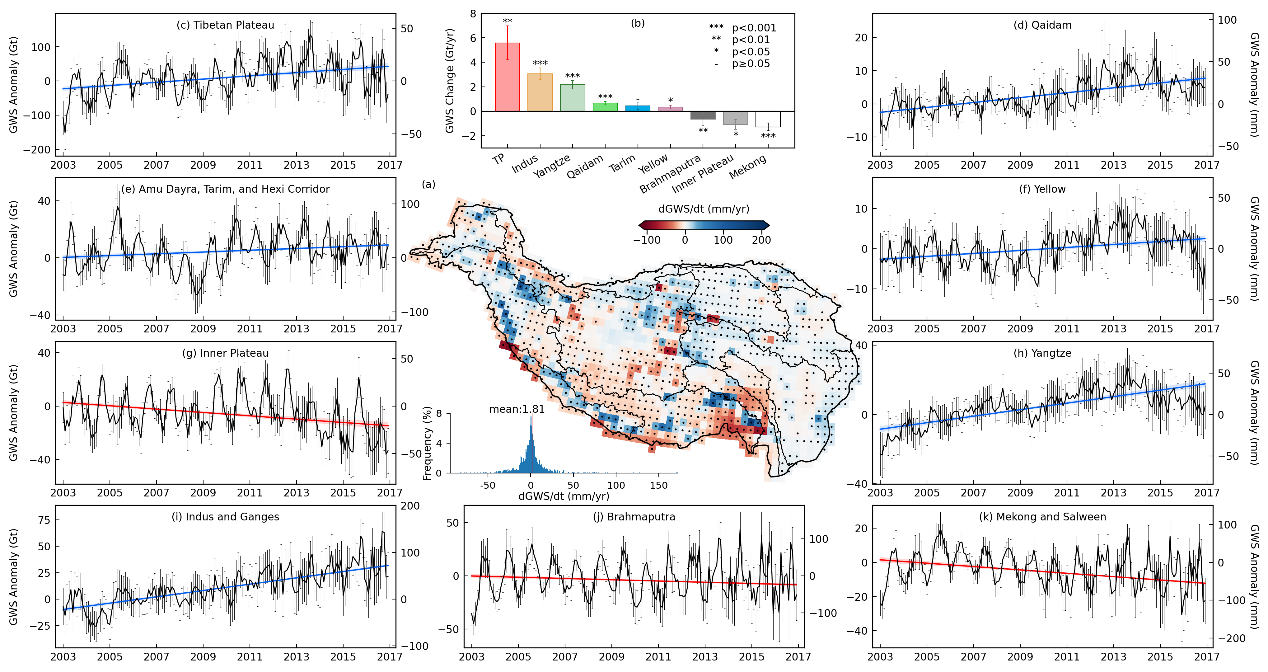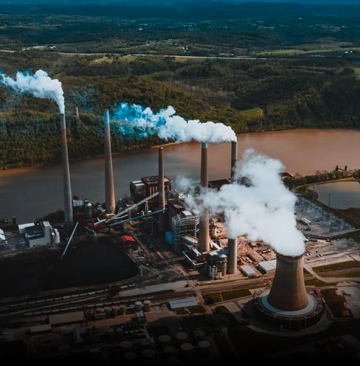Researchers make progress in study of groundwater in Tibetan Plateau
The Tibetan Plateau and its surroundings, also known as the Third Pole, are widely acknowledged as the Asian water tower. It holds glaciers with an area of about one hundred thousand square kilometers and lakes with an area of about fifty thousand square kilometers. It gives birth to more than ten large rivers in Asia, including the Yangtze River, Yellow River, Yarlung Tsangpo, Indus, Ganges, Mekong, Amu Darya, Tarim River, etc. Its environmental changes affect water resource utilization in China and water security in many nations involved in the Belt and Road initiative.
The Tibetan Plateau is undergoing dramatic changes characterized by an imbalance in a warming climate. Accelerated glacier retreat, permafrost degradation, lake expansion, as well as the increase of glacial melt to runoff are all related to the imbalance changes of the Tibetan Plateau. These have put the Tibetan Plateau and its surrounding regions at risk and caused many water-related hazards such as glacier collapse and glacial lake outburst floods. Tibetan Plateau change would be amplified through the atmosphere and hydrosphere to affect the global climate and water cycle. Therefore, the Tibetan Plateau has always been a focus of scientific research at home and abroad. Studying the hydrologic cycle of the cryosphere affected by climate change, especially the groundwater, is an international frontier scientific research issue.

Associate Professor Xingxing Kuang’s team from the School of Environmental Science and Engineering at the Southern University of Science and Technology (SUSTech) has recently published their findings on the important influence of cryosphere on the groundwater systems in the Tibetan Plateau under global warming.
Their research, entitled “Solid water melt dominates the increase of total groundwater storage in the Tibetan Plateau,” was published in Geophysical Research Letters, a Nature Index journal in the Geosciences category. Nature has selected this article as part of its Research Highlights and reported it under the headline “The ‘Asian water tower’ is brimming — with glacial melt water” (Figure 1).

Figure 1. Research Highlights reported by Nature
As an important source of runoff in the dry season, groundwater plays a critical role in maintaining the fragile ecosystem of the Tibetan Plateau. Studying how climate change affects groundwater (water stored in underground pores, fissures, and caves) in the Tibetan Plateau is crucial for downstream water security and food production. The accelerated transformation from solid water into liquid water may alter groundwater recharge, storage, and discharge to varying degrees, resulting in substantial changes in the groundwater system. However, how groundwater storage responds to climate change is poorly known because of limited observations caused by the harsh environment throughout the Tibetan Plateau.
Previous studies have found the increase in groundwater storage over several subregions of the Tibetan Plateau from the early 2000s and attributed it to various factors, including precipitation, evapotranspiration, glacier retreat, permafrost degradation, snow melt, ecological project, etc. However, the dominant factors controlling the long-term changes in groundwater storage remain unclear, and its response to climate change is not well understood, thereby calling for improved estimations of the water storage components and a holistic analysis of groundwater storage changes as well as their driving factors.
The researchers used gravity satellite observations from the Gravity Recovery and Climate Experiment (GRACE) mission and combined multi-source datasets, including remote sensing observations, global models, and reanalysis products, to quantify the mass changes in total land water storage, glaciers, lakes, snow cover, soil water, and permafrost ice, respectively. Based on the principle of water balance, the spatial-temporal evolution and driving mechanism of groundwater storage in the Tibetan Plateau from 2003 to 2016 were quantified and discussed.
They found that the total groundwater storage on the Tibetan Plateau increased at a rate of 5.59 billion tons per year during this period (Figure 2), which means that the total increase in groundwater storage during this period was almost twice the maximum capacity of the Three Gorges Reservoir in China. Based on the analysis of the source-sink terms of groundwater budget, it is concluded that the melting of glaciers, snow, and permafrost in the form of solid water (decreasing at a rate of 17.72 billion tons per year) dominates the long-term increase of groundwater storage in the Tibetan Plateau.
This study firstly clarified the dominant factors of long-term changes in groundwater storage affected by climate change in the Tibetan Plateau and suggested that the cryosphere should not be ignored in predicting future groundwater resource changes, which can be analogously extended to the global alpine mountains. This research is of great significance for predicting the evolution trend of groundwater storage under future climate scenarios and water resources management to adapt to climate change.

Figure 2. Spatial and temporal variation of groundwater storage in the Tibetan Plateau and its sub-basins from 2003 to 2016
Yiguang Zou, a master’s student in the School of Environmental Science and Engineering at SUSTech, is the first author of this paper. Associate Prof. Xingxing Kuang from SUSTech is the corresponding author. Co-authors include Prof. Chunmiao Zheng from SUSTech, Prof. Jiu Jimmy Jiao from the University of Hong Kong (HKU), Prof. Junguo Liu from SUSTech, and Prof. Yingying Yao from Xi’an Jiaotong University (XJTU).
This research was supported by the key projects from the National Natural Science Foundation of China Major Research Plan, “Runoff change and its adaptive management in the source region of major rivers in Southwestern China”.
Related links:
Paper link: https://doi.org/10.1029/2022GL100092
Nature Research Highlights: https://doi.org/10.1038/d41586-022-02989-x
